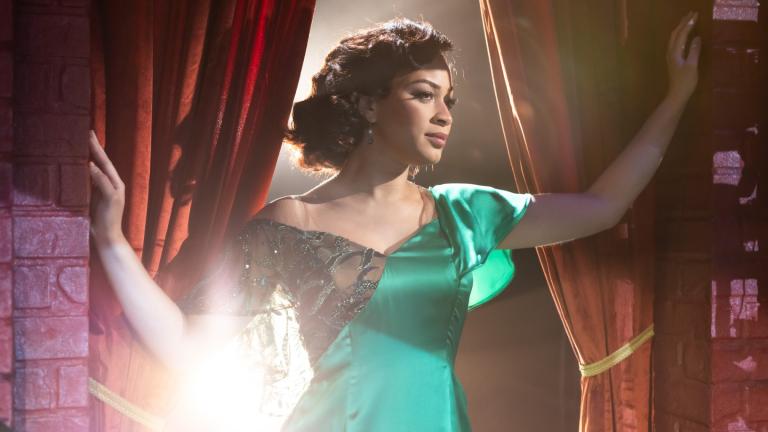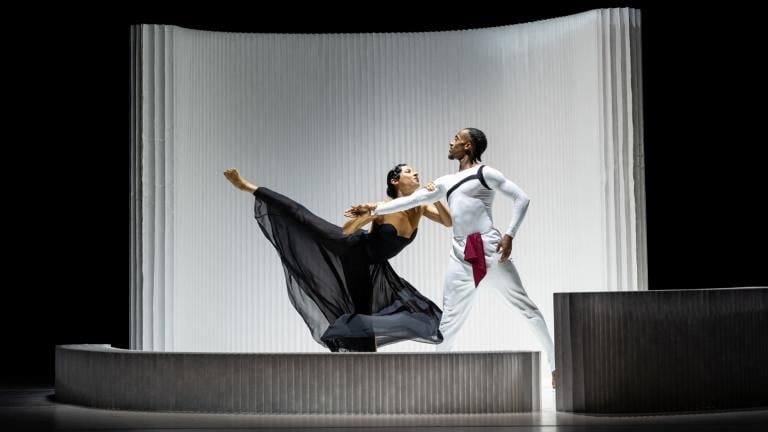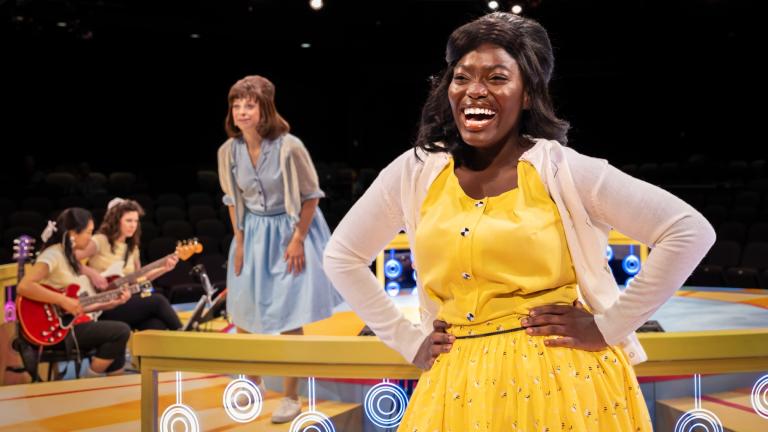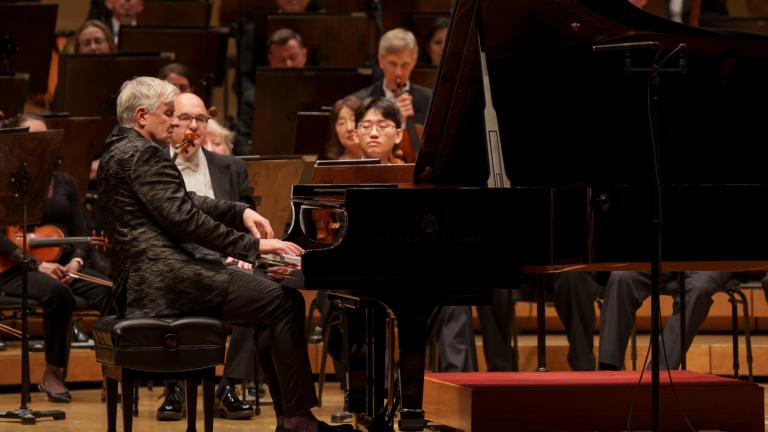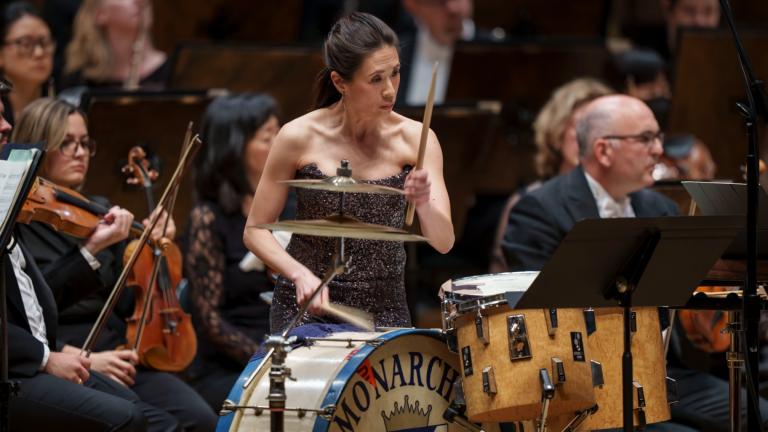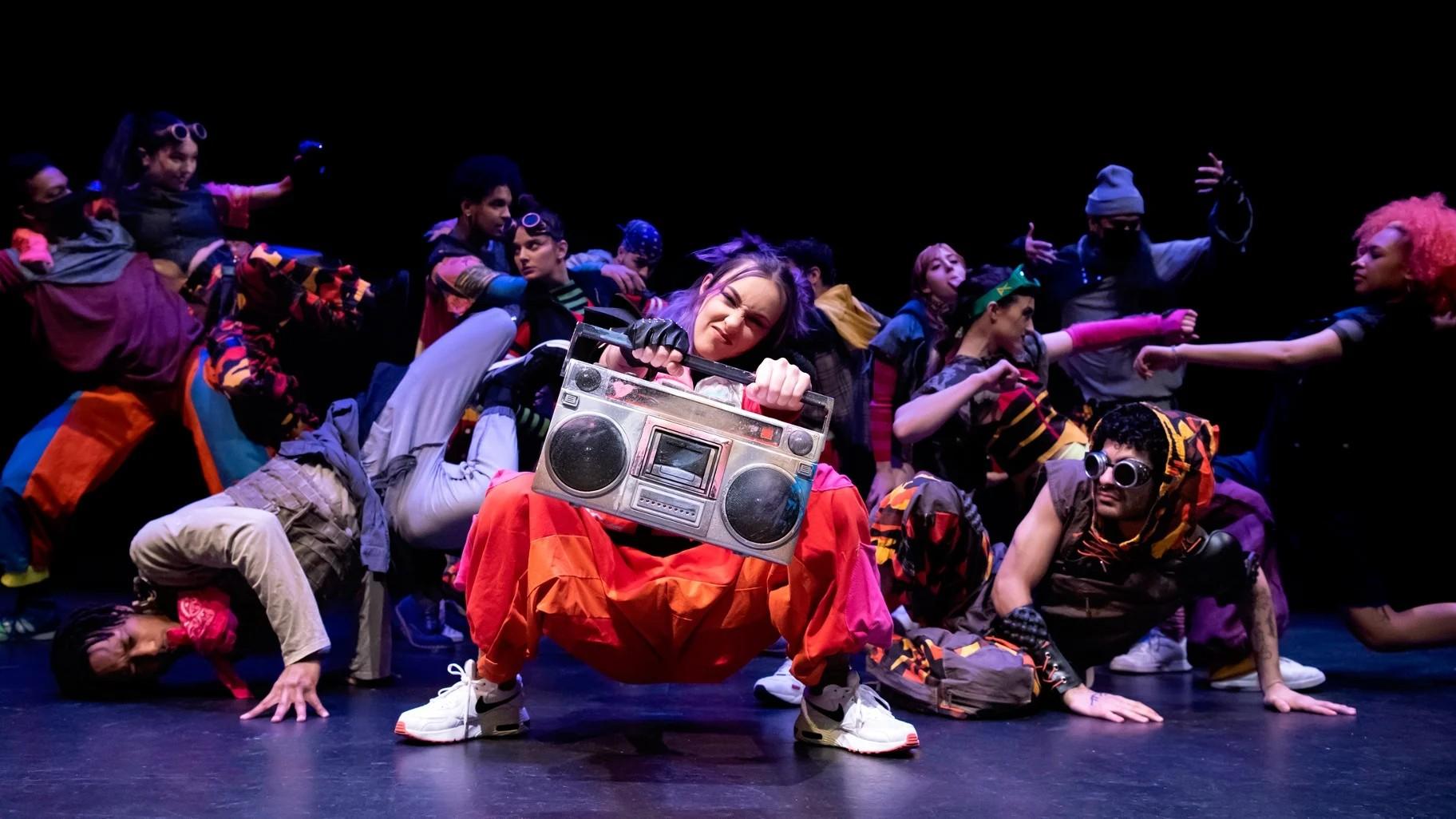 Chicago Dance Crash. (Credit: Ashley Deran)
Chicago Dance Crash. (Credit: Ashley Deran)
If you happened to feel the Earth move under your feet recently (apologies, Carole King), you might very well attribute it to two events.
The first came by way of Chicago Dance Crash. The company, long noted for its sophisticated, technically brilliant work in hip hop/contemporary dance, came storming across the stage of The Ruth Page Center for the Arts with a phenomenal full length work, “Booms Day.”
Then, on the following evening Aug. 27, an estimated 7,000 people gathered in Millennium Park to watch the Chicago Black Legacy Dance Project, a wonderfully exuberant gathering of eight stylistically different companies (along with a knockout collection of drummers) that showcased their work on the vast Pritzker Pavilion stage. (Admission was free.)
Both events served as the latest vivid illustration of why 2022 has rightly been designated “The Year of Chicago Dance.”
To start, a look at “Booms Day,” the Dance Crash production comprised of 16 scenes directed and choreographed by the company’s immensely gifted artistic Jessica Deahr working in collaboration with James Gregg, Jimmy Weeden, KC Bevis and Annie Franklin, and incorporating the “movement and freestyle riffs” of the dancers.
With narrated moments cleverly penned by Mark Hackman (and expertly narrated by Molly Harris and Christian Castro), this work, which bears the subtitle “Life, strife, and relationship goals after the end of the world,” is a powerful riff on the notion of Doom’s Day. And with its fabulously acrobatic vision of a post-apocalyptic world awash in tattered human relations, it feels all too close to the state of the world at this moment.
Ironically enough, the multifaceted soundtrack (expertly devised by Deahr, with audio recordings and mastering by Johnny Nevin) draws on music with a more vintage vibe, with songs ranging from those of the Carpenters, The Police, Sufjan Stevens and the Mamas & the Papas to Leonard Cohen, Kanye West and many others. And it works ideally. So does Jeff Hancock’s set design (cleverly lit by Erik S Barry), that suggests a dump site piled high with chairs, lamps, bikes, a clock, a “No Parking” sign and more, evoking both a fractured society and broken relationships. A boombox serves as an important prop throughout the work.
But it is the phenomenal performances by this company of dancers that suggests a society awash in a full range of emotional and physical turmoil that is most arresting here. And the intensely theatrical interaction is conjured by feats of daring partnering, stylized combat, impeccable technique and the artful use of hip-hop, breakdance and gymnastic moves.
It begins in a state of “Peace,” as the exceptional (and fearless) dancers KC Bevis and Phil Wood engage in a terrific pas de deux. Then comes chaos and animosity in the cleverly titled “Pocalips,” choreographed by Gregg and danced by Bevis, Diamond Burdine, Anna Goetz, Jack Halbert, Molly Harris, Logan Howell, Jessica Leyva, Kelsey Reiter, Monternez Rezell and Ibrahim Sabbi. The ensuing episodes suggest relationships among both lovers, friends and family that are torn asunder by the forces of evil and fierce fights captured in the form of dynamically danced encounters. But a return to hopeful to peace is promised in the end.
“Booms Day” will run through Sept. 10 at the Ruth Page Center, 1016 N. Dearborn, with performances on Fridays and Saturdays at 7 p.m. For tickets visit chicagodancecrash.com.
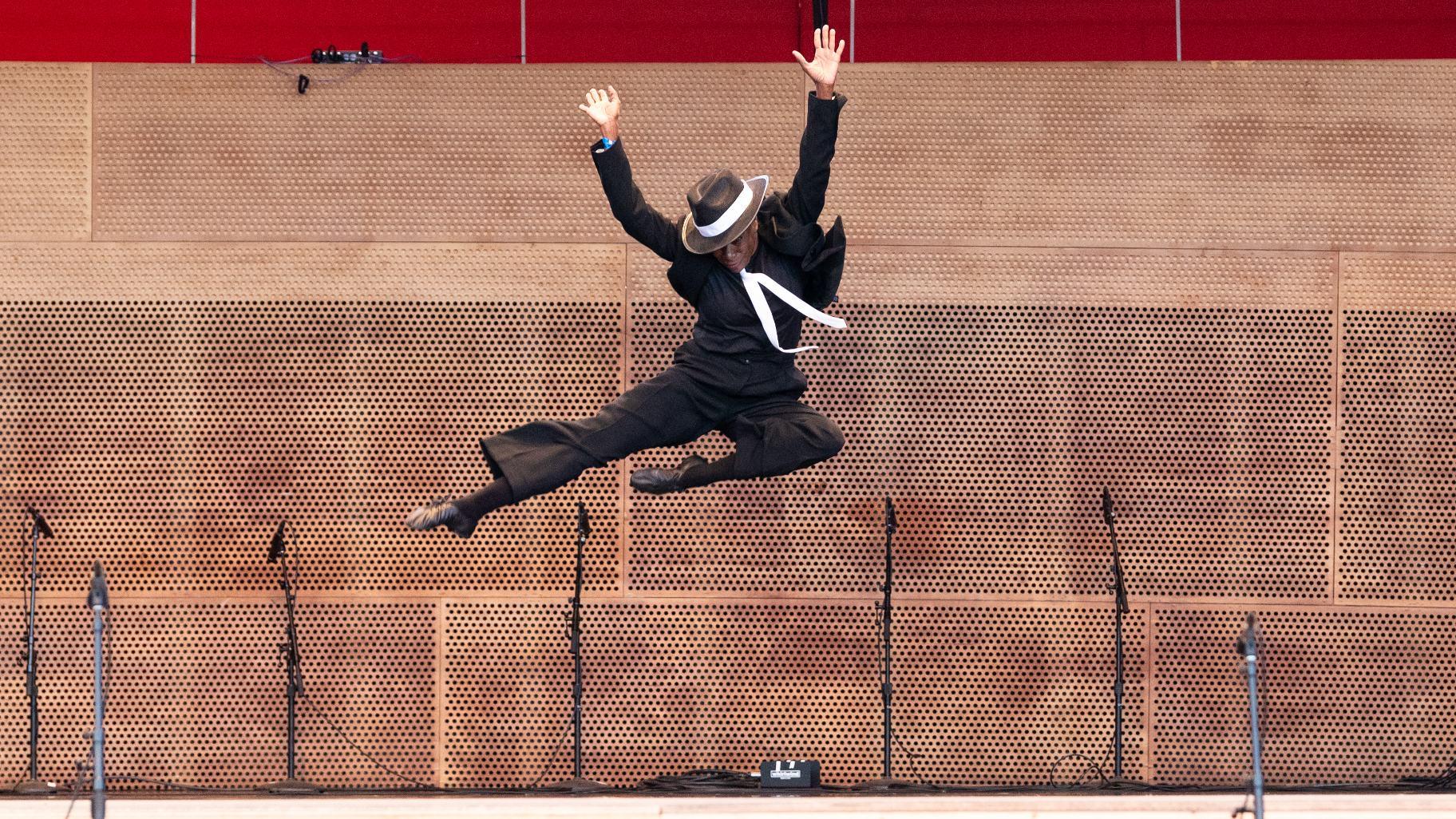 Joel Hall Dancers performed Hall's "El Gato Negro." (Credit: Shoccara Marcus)
Joel Hall Dancers performed Hall's "El Gato Negro." (Credit: Shoccara Marcus)
And now on to the one-night-only Chicago Black Dance Legacy Project dubbed “Reclamation: The Spirit of Black Dance in Chicago,” a grand-scale sampler that showcased the wide-ranging roots and styles of Chicago’s many dance troupes who work in a wide range of Black heritage styles.
The program opened with an absolutely beguiling performance choreographed by Pierre Lockett, and danced with impressive synchrony and joyfulness by a few dozen very young girls in flouncy red costumes (plus two outstanding boys in street clothes). All were part of Forward Momentum Chicago, an organization devoted to using dance as an educational tool.
Next, the always outstanding Deeply Rooted company performed excerpts from “Episodes,” an intense, powerfully danced exploration of on again/off again relationships choreographed by the late dancer/choreographer Ulysses Dove, a veteran of the Alvin Ailey company.
The Joel Hall Dancers performed their namesake’s work, “El Gato Negro,” featuring stylish couples dressed in black suits, white ties and fedoras that suggested a jazzy 1920s era nightclub vibe even though the piece was set to techno house music. It was a fine mashup of street dance with both jazz and modern influences.
Dancers in gym-like outfits and African fabrics took over the stage in “Power,” Homer Hans Bryant’s playfully attitude-driven work for CMDC (Chicago Multi-Cultural Dance Center). Featuring dancers in a delightful mix of pointe shoes, bare feet and sneakers it played with a style dubbed Hiplet — a hybrid of ballet and hip hop.
Six terrific drummers created the driving beat for Red Clay Dance Company’s “Incarnation,” choreographed by DuBois A’Keen.
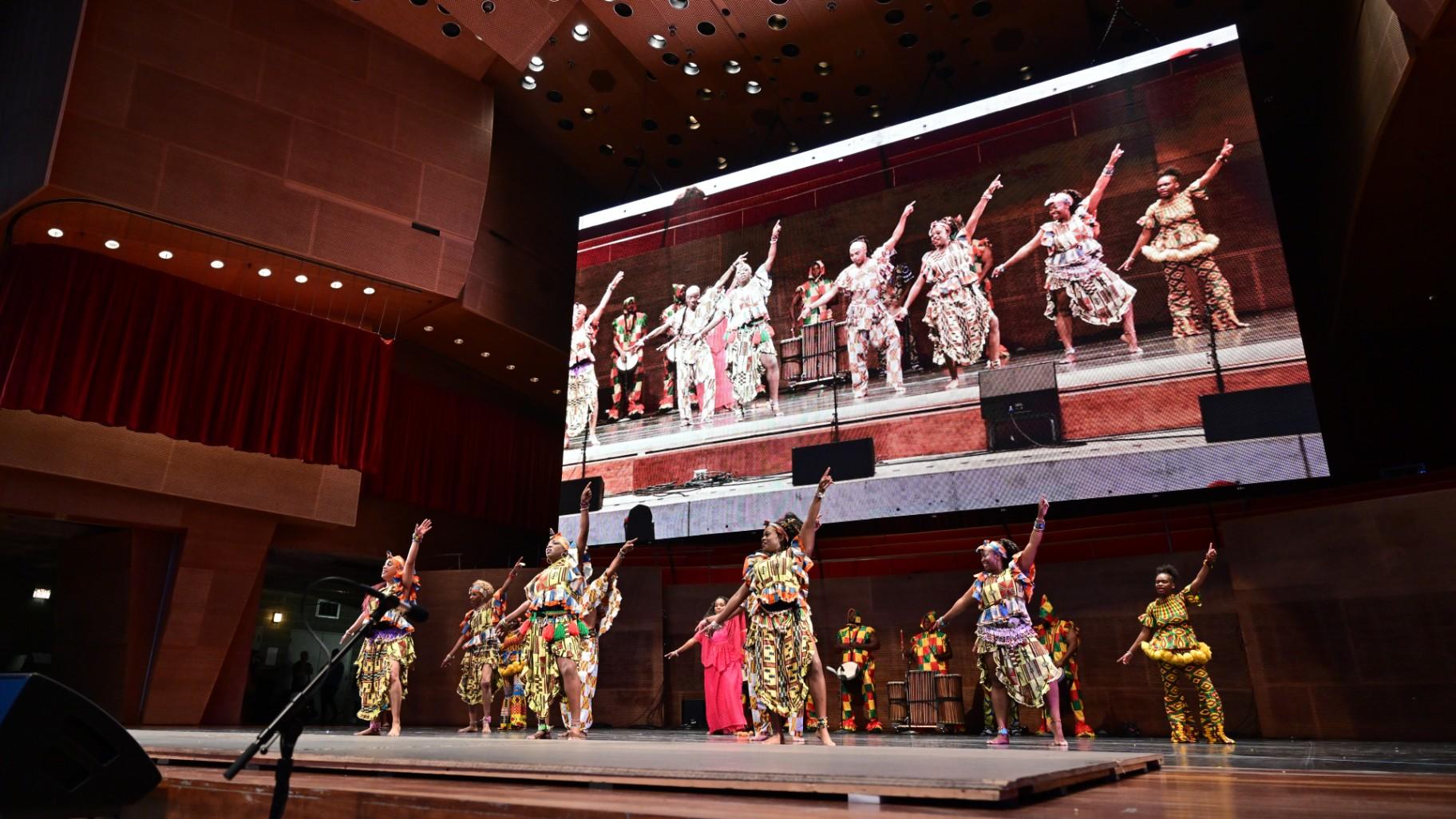 The NAJWA Dance Corps perform as part of “Reclamation: The Spirit of Black Dance in Chicago.” (Credit: Patrick Pyszka)
The NAJWA Dance Corps perform as part of “Reclamation: The Spirit of Black Dance in Chicago.” (Credit: Patrick Pyszka)
The NAJWA Dance Corps performed stunning excerpts from “Guinea Suite,” a vibrant work choreographed by Mouminatou Camara. Rooted in Guinea, it was emblematic of how women celebrate the basic rites in their lives.
With “In the Beginning,” choreographed by Starinah “Star” Dixon, the members of the M.A.A.D Rhythms company contributed a bravura display of tap dance and its roots in African rhythms.
Muntu Dance Theatre performed choreographer Cassad Abuela Hui’s “Summer Breeze,” a wonderfully exuberant piece set on a beach in Havana, Cuba, and designed to celebrate the blending of Afro-Cuban and West Indian styles.
And then came the Ayodele Drum & Dance troupe, with a galvanic drum score by Weedie Braimah that had the audience dancing in its seats.
Throughout the evening the performances were projected on a massive video screen that made each piece fully visible to the vast audience. Like the program itself, this created a larger than life feeling.
Follow Hedy Weiss on Twitter: @HedyWeissCritic

